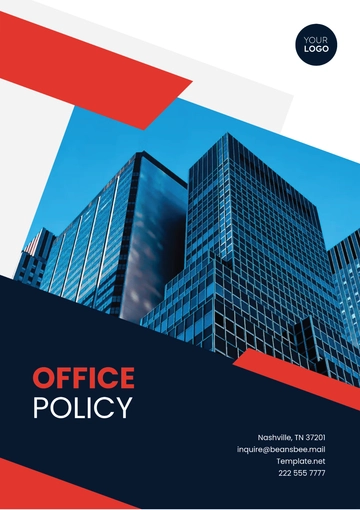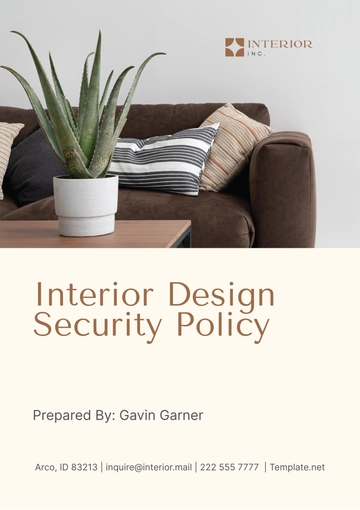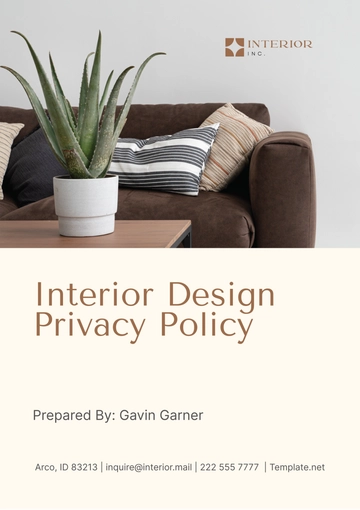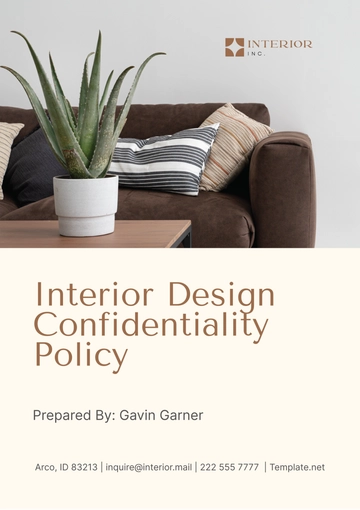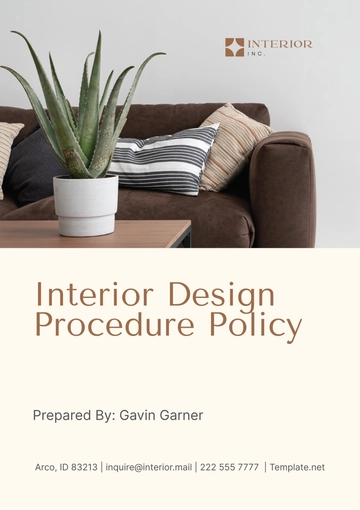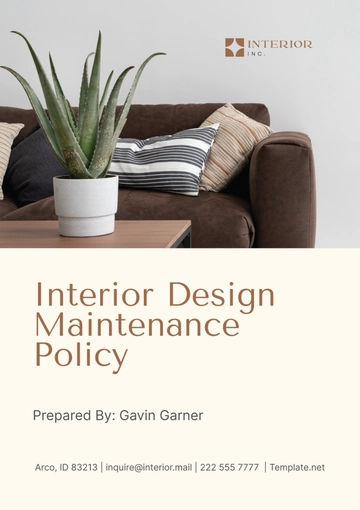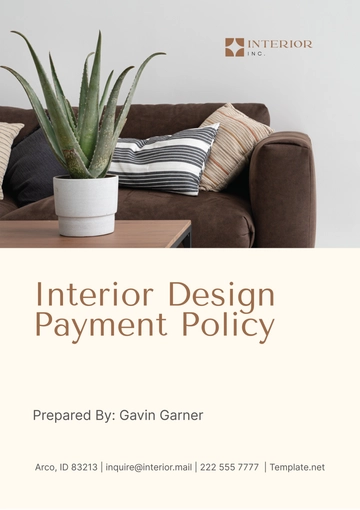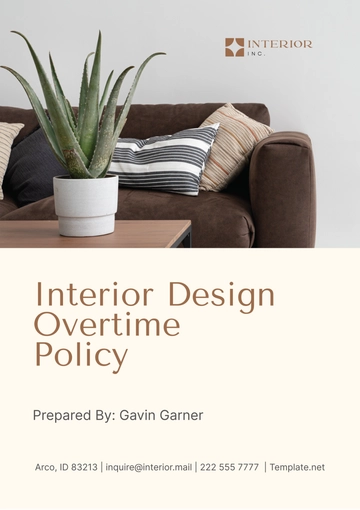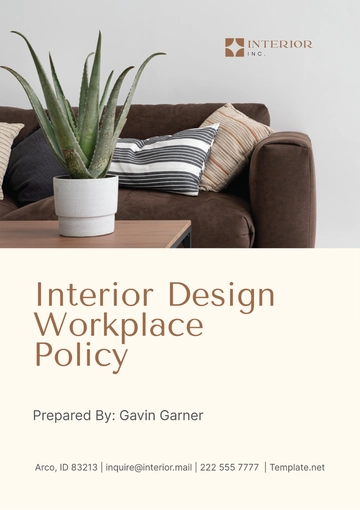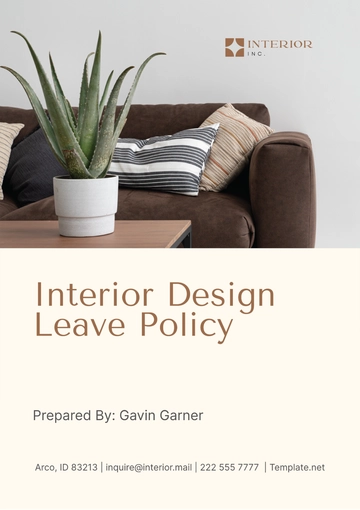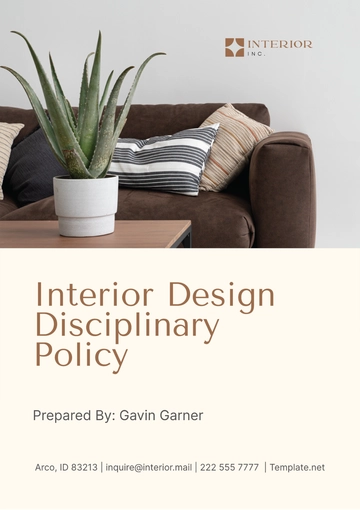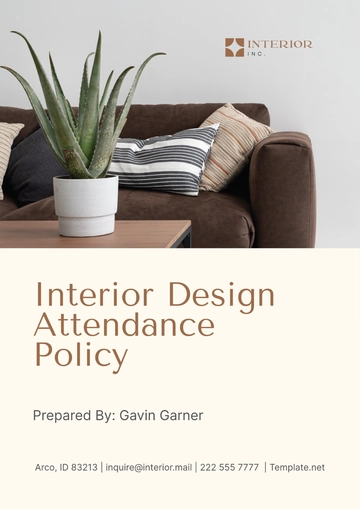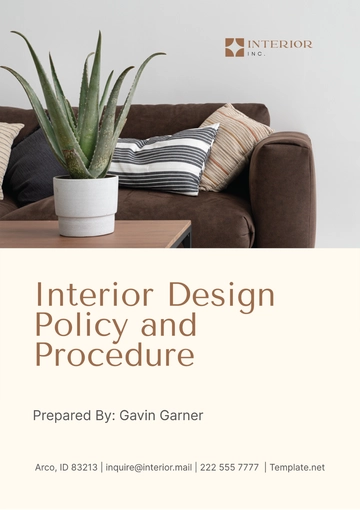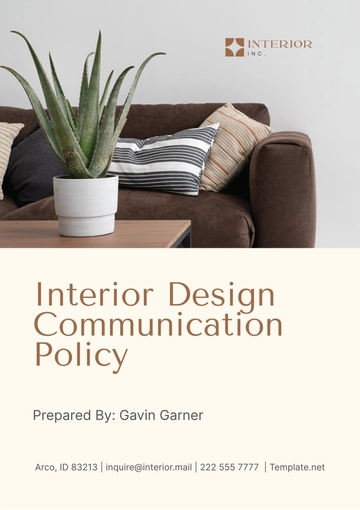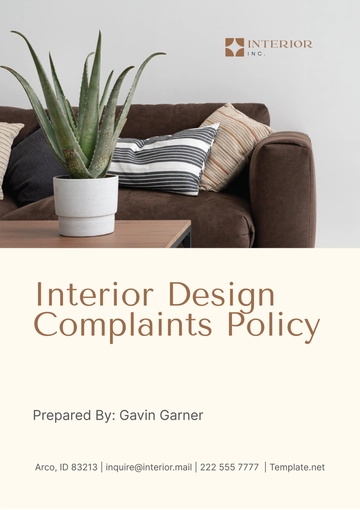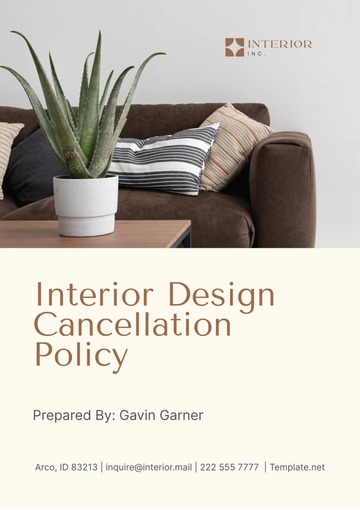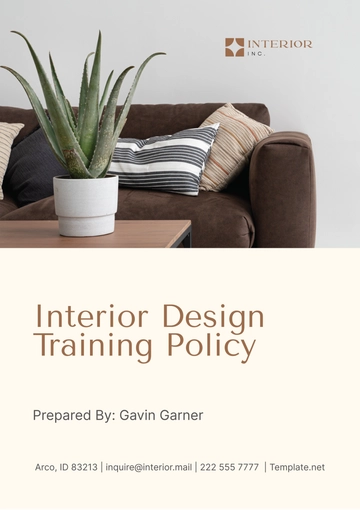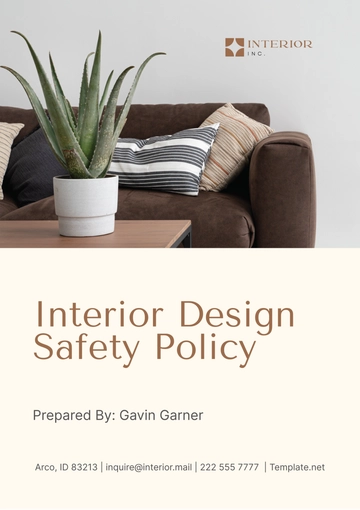Free Interior Design Disciplinary Policy
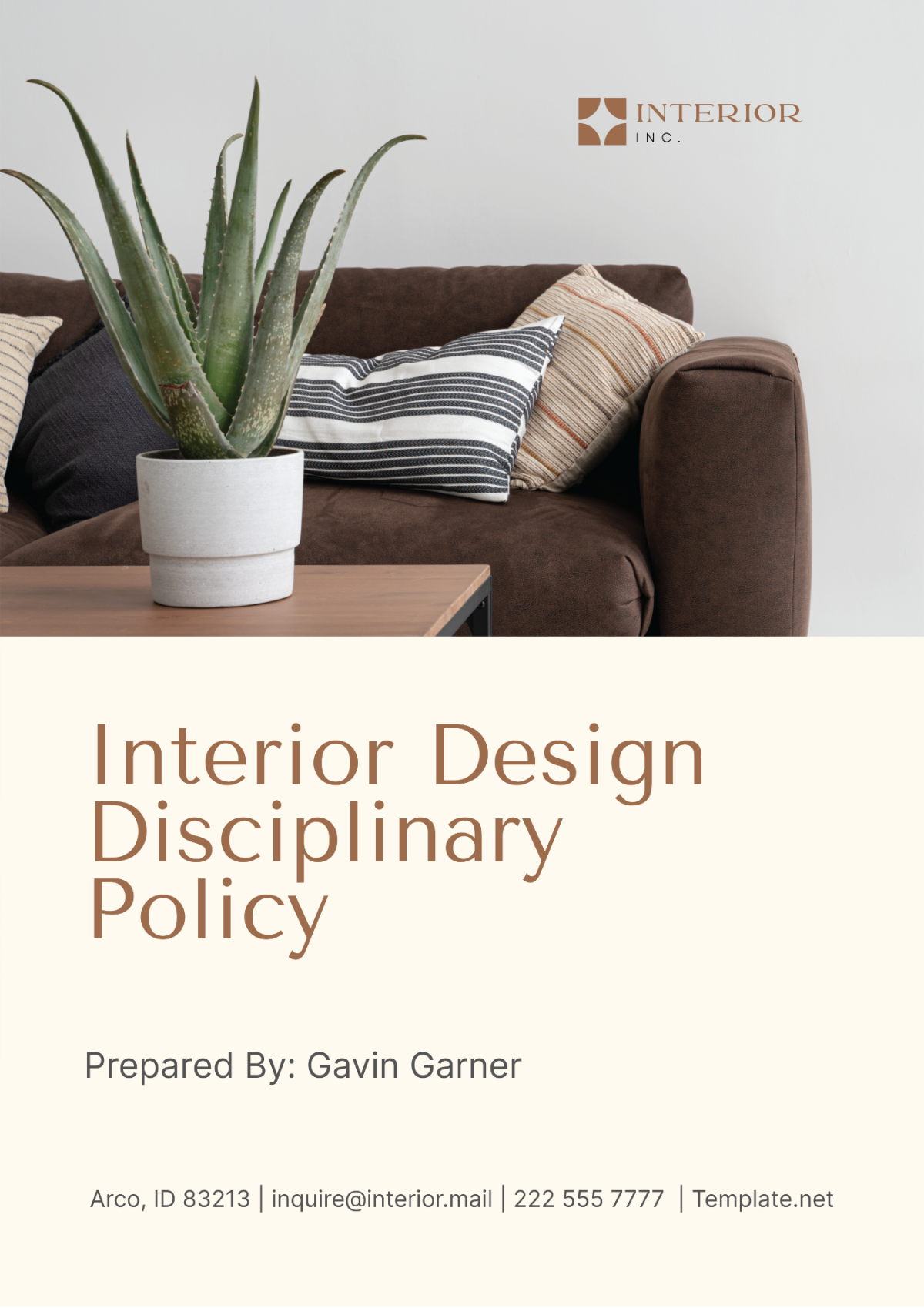
1. Purpose and Scope
The purpose of this Interior Design Disciplinary Policy is to establish clear and consistent standards of behavior and performance expected from all employees of [Your Company Name]. This policy serves as a guideline for addressing any discrepancies in employee conduct that do not align with the company’s established practices and ethical standards. The intention is to foster a professional, safe, and respectful work environment that promotes productivity and positivity within our team. By implementing this policy, [Your Company Name] ensures that all disciplinary measures are administered fairly and legally, safeguarding the rights of our employees while maintaining compliance with applicable federal and state laws.
This policy applies to all employees of [Your Company Name], regardless of their position or tenure. It encompasses all aspects of employee behavior, including interactions with clients, suppliers, and colleagues, as well as adherence to professional standards specific to the interior design industry. Managers and supervisors are also responsible for upholding these standards and leading by example, ensuring that their teams are aware of and comply with the company's disciplinary expectations. This policy is a crucial component of our commitment to upholding the integrity and professionalism that define [Your Company Name].
2. Definitions
To ensure clarity and consistency in the interpretation and implementation of this Interior Design Disciplinary Policy, the following key terms are defined:
Misconduct: Refers to behavior or actions that violate [Your Company Name]'s established workplace policies, ethical standards, or expected professional conduct. Examples of misconduct may include, but are not limited to, persistent tardiness, failure to complete assignments on time, minor breaches of client confidentiality, and non-compliance with workplace safety guidelines.
Gross Misconduct: Involves actions that constitute a serious violation of [Your Company Name]'s policies and ethical standards, potentially causing significant harm to the company, its employees, or clients. Gross misconduct includes, but is not limited to, theft, fraud, acts of violence, severe harassment, and deliberate disclosure of sensitive company or client information. Gross misconduct typically warrants immediate dismissal.
Warning (Verbal and Written): A formal notice given to an employee about their unacceptable behavior or performance. A verbal warning is informally communicated but documented in the employee’s record. A written warning is a formal document that describes the nature of the misconduct, the expected changes in behavior, and the consequences of failing to improve.
Suspension: The temporary removal of an employee from their workplace duties, without pay, as a disciplinary measure. Suspension is often used in cases requiring further investigation of alleged misconduct or as a disciplinary step prior to potential dismissal.
Termination: The act of ending an employee’s contract with [Your Company Name] due to misconduct or gross misconduct. Termination is considered a last resort and is typically preceded by a series of documented warnings and/or a suspension, unless the case involves gross misconduct.
These definitions are designed to eliminate ambiguity and provide a clear framework for addressing disciplinary issues within [Your Company Name].
3. Standards of Conduct
[Your Company Name] expects all employees to adhere to high standards of professionalism, respect, and integrity. These standards are fundamental to maintaining our reputation and effectiveness in the interior design industry. Below are the key areas of conduct that all employees are expected to follow:
Professionalism
Employees are expected to perform their duties competently and strive for excellence in all aspects of their work. This includes maintaining a high level of professionalism in client interactions, meeting deadlines, and presenting oneself and the company in a manner that reflects positively on our business. Adherence to all professional guidelines, industry standards, and company policies regarding project management, client confidentiality, and financial transactions is mandatory.
Respect
All employees must treat colleagues, clients, and vendors with respect and courtesy. This includes fostering an environment free of harassment, discrimination, and retaliation. Respect for diversity in thoughts, backgrounds, and perspectives is crucial and contributes to the innovative and inclusive culture at [Your Company Name].
Compliance with Policies
Employees are required to comply with all internal policies, procedures, and legal requirements. This includes adhering to safety protocols, employment practices, and any laws applicable to the field of interior design. Regular training sessions will be provided to ensure all employees are up-to-date with their legal and ethical obligations.
Ethical Conduct
Maintaining ethical integrity is crucial in all business dealings and professional interactions. This involves honesty, fairness, and transparency. Conflicts of interest must be avoided or disclosed in accordance with [Your Company Name]'s conflict of interest policy.
4. Disciplinary Actions and Procedures
This section outlines the structured approach [Your Company Name] follows when addressing breaches of conduct. It ensures that all disciplinary actions are conducted fairly, transparently, and consistently, with respect for the rights of all parties involved. Here is the six-step process for managing disciplinary actions:

1. Identification and Reporting
Any breach of conduct is identified and reported to a direct supervisor or the Human Resources (HR) department. Reports can be made by colleagues, supervisors, or clients and should be submitted as soon as an issue arises.
2. Preliminary Assessment
HR, in conjunction with the relevant department head, conducts a preliminary assessment to determine the validity of the report. If the claim is found to warrant further investigation, the process moves to the next step.
3. Formal Investigation
A formal investigation is launched, led by HR with the involvement of relevant stakeholders. This may include interviews with the accused, the complainant, and any witnesses. All parties are encouraged to provide any relevant information or documentation that may support the investigation.
4. Hearing
If the investigation substantiates the allegations of misconduct, a disciplinary hearing is scheduled. The employee is notified in advance and given an opportunity to prepare their case, present evidence, and respond to the allegations.
5. Decision and Notification
After the hearing, HR and department heads review the evidence and testimonies to make a decision. The employee is then notified of the outcome and any disciplinary measures to be taken, which may include a verbal warning, written warning, suspension, or termination.
6. Appeal Process
The employee has the right to appeal the decision. An appeal must be submitted in writing to the HR department within a specified period, typically five working days. The appeal is reviewed by a separate panel not involved in the initial decision, and a final decision is made.
5. Appeal Process
The appeal process at [Your Company Name] is designed to ensure fairness and allow employees to challenge disciplinary decisions they believe to be unjust. This structured approach ensures that all appeals are handled with thorough consideration and impartiality. Below is the detailed process for appealing a disciplinary action:

1. Notification of Decision
Employees receive a written notification of the disciplinary decision and the reasons for the action. This notification includes detailed information on how to file an appeal.
2. Filing an Appeal
An employee wishing to appeal a decision must submit a written appeal to the Human Resources (HR) department within five working days of receiving the disciplinary decision. The appeal should clearly state the grounds for the appeal and any new evidence or information to be considered.
3. Acknowledgment of Appeal
HR acknowledges receipt of the appeal and provides a timeline for the review process. The employee is informed about the steps involved and the expected timeframe.
4. Review of Documentation
An appeal committee, usually comprising senior HR personnel and a senior executive not involved in the initial decision, is formed to review the appeal. The committee examines all relevant documents, the original decision, and any new information provided by the employee.
5. Appeal Hearing
The employee may be invited to a hearing to discuss the appeal. This provides an opportunity for the employee to present their case in person or via a representative, and for the committee to ask questions and clarify details.
6. Final Decision
After the hearing and careful consideration, the appeal committee makes a final decision on the appeal. The employee is notified in writing of the outcome, which may uphold, modify, or overturn the original disciplinary action.
6. Documentation and Record Keeping
Proper documentation and secure record keeping are vital components of the disciplinary process at [Your Company Name]. These practices ensure compliance with legal standards and provide necessary support if disciplinary actions are questioned or reviewed. Below are the key aspects of our documentation and record-keeping procedures:
Documentation Procedures
Creation: All disciplinary actions, from verbal warnings to termination, must be documented in writing. The documentation should include details of the misconduct, the steps taken during the disciplinary process, and the justification for the disciplinary action taken.
Accuracy: Documentation must be accurate, detailed, and impartial, capturing all relevant facts and evidence, including dates, locations, and witness statements if applicable.
Record Keeping
Confidentiality: All records related to disciplinary actions are strictly confidential and accessible only to authorized personnel. This is to protect the privacy of all involved parties and to maintain trust within the organization.
Storage: Documents are stored securely in electronic or physical format for a duration specified by company policy and relevant laws. Electronic records are protected by security measures such as encryption and access controls.
7. Review and Modification of Policy
The Interior Design Disciplinary Policy at [Your Company Name] is reviewed biennially to ensure that it remains current with evolving legal standards, industry practices, and organizational needs. The Human Resources (HR) department, in collaboration with legal counsel and senior management, is responsible for initiating the review process. This collaborative approach ensures that any necessary adjustments are well-informed and appropriately integrated into the policy.
Modifications to the policy may also be prompted by legal changes, feedback from employees, or shifts in company strategy. Once changes are made, the updated policy is communicated to all employees through internal communication channels. Employees are encouraged to familiarize themselves with the revised policy to ensure ongoing compliance and understanding of their rights and responsibilities.
- 100% Customizable, free editor
- Access 1 Million+ Templates, photo’s & graphics
- Download or share as a template
- Click and replace photos, graphics, text, backgrounds
- Resize, crop, AI write & more
- Access advanced editor
Welcome to Template.net's Interior Design Disciplinary Policy Template - your solution for maintaining decorum in your design firm. This editable and customizable template ensures clarity and compliance with company regulations. Crafted for ease, it's editable in our Ai Editor Tool, offering seamless customization. Elevate your interior design business with professionalism and order.
You may also like
- HR Policy
- Restaurant Policy
- Company Policy
- Accounting Policies and Procedures
- Website Policy
- Privacy Policy
- Safety Policy
- School Policy
- IT and Software Policy
- Law Firm Policy
- Construction Policy
- Interior Design Policy
- Travel Agency Policy
- Education Academic Policy
- Security Policy
- Real Estate Policy
- Expense Policy
- Software Policy
